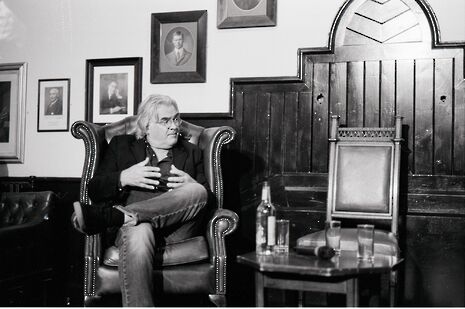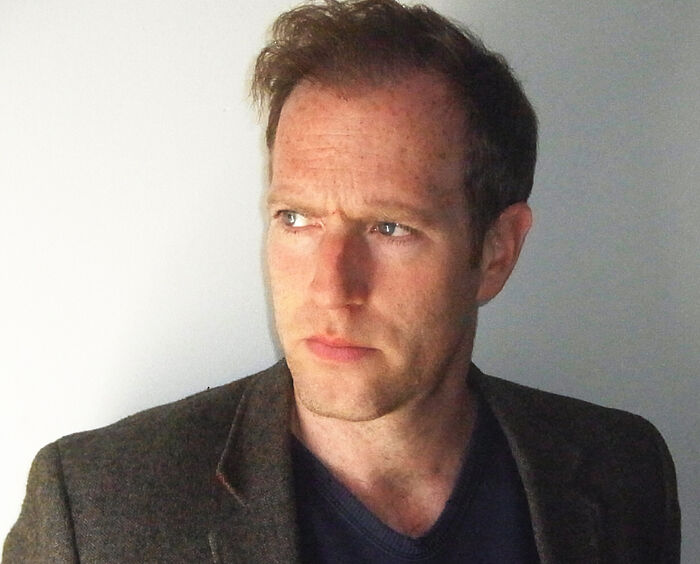Paul Greengrass: ‘You can’t close the door when the whole building is on fire’
The director of 22 July talks to Mathias Gjesdal Hammer about his choice to make the film, saying we need to “confront” the ideology of the growing far-right

Content note: reference to terror attacks, mass shooting
In the years following Anders Behring Breivik’s terror attacks on Oslo’s governmental quarters and a Norwegian Labour Party Youth camp, in which 77 people were killed and over 300 were injured, a growing number of books, plays, exhibitions have tried to make sense of the horrific events. Over the past year, the debates about the 22nd of July attacks in Norway have taken on a new slant as films and TV shows have begun dramatising the events. Perhaps the most fervently discussed and controversial of these films has been Paul Greengrass’s 22 July. Before the release of the film, over 20,000 Norwegians signed a petition to stop the film’s release, fearing a ‘Hollywood-ification’ of the tragic events, the potential negative impacts of the film on survivors – and above all, that it would give Breivik’s far-right message a wider platform.
"We have to confront these [far-right] arguments directly and you can’t begin to confront these arguments if we don’t know what they are"
Speaking to Greengrass before his address to the Cambridge Union earlier this week, it was clear that he had taken these public concerns seriously. Before starting work on the film, Greengrass consulted with the victims of the attack and their families, as well as Jens Stoltenberg, the Norwegian Prime Minister from 2005-2013, and Breivik’s defence attorney, Geir Lippestad, who also spoke at the Union alongside Greengrass. Greengrass told me that “the people who can rightfully decide [whether this film should or should not be made] are the survivors, which is why I went to them in advance, asked for their permission and had many meetings to discuss how the film would be.” Moreover, Greengrass felt it was possible to face Breivik’s far-right ideology head-on without mythologizing him or promoting his ideology, declaring that “we have to confront these arguments directly, and you can’t begin to confront these arguments if we don’t know what they are.”
Today, Greengrass is best known for his dramatizations of traumatic historical events in Bloody Sunday, United 93 and Captain Phillips, as well as his foray into more conventional thrillers with the Bourne films. According to Greengrass, his approach to filmmaking can be traced to an early job at World in Action, a British news programme known for its in-depth investigative journalism.
Want to get involved with Varsity interviews?
Meet some of Cambridge’s most interesting figures and ask your burning questions. Just join our Interviews Writers group or email our Interviews team to express interest.
Looking back at his career, Greengrass recalls that “it was then [that] I learned how to make films and more importantly it was there [that] I learned about the way the world is.” This investigative instinct is something Greengrass has held onto in his later work. “I’ve never lost the instinct to engage with what’s happening and try to find a moment, say United 93 or 22 July, that tells us a little bit about where the world’s going.”
While Greengrass suggests that his films such as the Bourne trilogy are largely entertainment, he maintains that his desire to observe the world is still present in these mainstream thrillers: “I think if you want to know what it felt like to be in the West in the years 2003-2009 – Iraq, the hubris and paranoia of those years – in a funny popcorn way, then those movies give you that feeling.”
The reception of Greengrass’s new film in Norway has been largely positive. One of the main criticisms of the film, however, concerns how Greengrass altered and changed certain events to fit the story within a cinematic context. When I asked Greengrass about this, he responded:“a film is not journalism, it’s not history. It obviously can’t be as comprehensive and detailed in the way a book can.”
Greengrass picks up on this point again later in the interview. “You have to ask if these factual changes are materially changing [what happened]. It’s like a drawing. If I drew you, even if I were Rembrandt, it wouldn’t be you. It would be slightly different in many respects. The question is whether my depiction of you captures some essence of you.”
“If you look at what Breivik says – his worldview – that is mainstream today for any right-wing politician across Europe and America”
Greengrass insists that many of the alterations to the real-life events in the film were not made out of a failure to understand the nuances of the case, but were deliberate directorial decisions made to protect those involved. For example, Greengrass brings up the fact that he changed the number and gender of the people at the dock where Breivik got a ferry to Utøya.
In real life, there was a single young man on guard duty who called the ferry which Breivik used to get to Utøya, while in Greengrass’s film two young women guard the dock. Greengrass defends this decision. “I didn’t want that young person to feel he had been portrayed in a way that made him seem culpable for Breivik getting across. So that was an example of a change you make out of respect.” Similarly, he suggests that his decision to downplay the shortcomings of the police was because “you have to fairly reflect the systemic problems rather than nail the individuals.”
While Greengrass acknowledges the importance of the specific Norwegian context of the attack, he is also eager to emphasize the link between Breivik and the rise of the far-right throughout the Western world.
According to Greengrass, the film is a story “about Norway” but says that in reality “it’s about us today in this country [UK] and across Europe and America, because of this huge right-wing resurgence.” Looking back at his initial research for the film, Greengrass remembers “reading [Breivik’s] testimony and thinking that his opinions about the betrayal by the elites, the sham of democracy, ‘enforced’ multiculturalism and so on would’ve been considered on the margins of politics in 2011-12, but today that’s mainstream opinion.”
“If you look at what Breivik says – his worldview – that is mainstream today for any right-wing politician across Europe and America,” he says in reference to the rise of parties such as the German AfD. Greengrass’s motivations for making this film, then, were to be able to confront the far-right directly, rather than simply ignore the growing threat. As Greengrass puts it, “you can’t close the door when the whole building is on fire.”
For Greengrass, how Norway faced Breivik throughout his trial in a court of law was an exemplar of how to face the threat of the far-right. Greengrass explains to me the importance of the trial in which the survivors of the attacks spoke out about their unimaginable experiences. “What Norway managed in a court of law – they challenged him, they literally defeated him.” On this point, as a Norwegian, I can’t quite bring myself to agree with Greengrass’s optimistic take on the story.
While Norway, and above all the young survivors, dealt with Breivik in an admirable way within the court of law, the legacy of his attacks looms large in Norwegian politics. Survivors of the shootings continue to receive hate mail and death threats, and the right-wing populist Progress Party is part of the current coalition government and is the third biggest party in Norway. While Greengrass is right to suggest Breivik was challenged, we have perhaps failed to root out wider far-right sympathies, which, if anything, have grown in the years since July 22nd, 2011.
While Greengrass tells me that the current spread of the far-right “is not like anything [he has] ever lived through,” he offers reasons to believe that their growth might be reversed. “I think alongside this huge resurgence of populist right-wing activity we are now seeing a new generation of people challenging this movement. You can see it in response to the Parkland Shootings in the US, in the response to the Five Star movement in Italy, to the AfD in Germany. In this country you can see it in the response to the Brexit vote.”
Speaking directly to the chamber later that evening, Greengrass offered a rallying cry against the spread of the far-right. “You have to do what those young people did in that courtroom. They came in and they confronted [Breivik] emotionally, intellectually, morally and politically with a different view of the world, which, in the end, prevailed.”
 News / Cambridge academics stand out in King’s 2026 Honours List2 January 2026
News / Cambridge academics stand out in King’s 2026 Honours List2 January 2026 Comment / Plastic pubs: the problem with Cambridge alehouses 5 January 2026
Comment / Plastic pubs: the problem with Cambridge alehouses 5 January 2026 News / Cambridge businesses concerned infrastructure delays will hurt growth5 January 2026
News / Cambridge businesses concerned infrastructure delays will hurt growth5 January 2026 News / AstraZeneca sues for £32 million over faulty construction at Cambridge Campus31 December 2025
News / AstraZeneca sues for £32 million over faulty construction at Cambridge Campus31 December 2025 Interviews / You don’t need to peak at Cambridge, says Robin Harding31 December 2025
Interviews / You don’t need to peak at Cambridge, says Robin Harding31 December 2025









